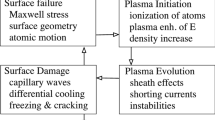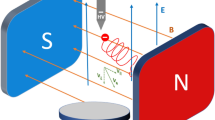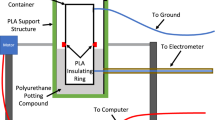Abstract
MASON1 has shown that the short-time electric strength of polythene and other solid insulating materials may have an average value many times less than the intrinsic breakdown stress, because of the distortion of the field and the high local stress at the ends of discharges. Still to be explained, however, is the steepness of the breakdown voltage/time characteristic for 50 c./s. stresses of a few seconds duration.
This is a preview of subscription content, access via your institution
Access options
Subscribe to this journal
Receive 51 print issues and online access
$199.00 per year
only $3.90 per issue
Buy this article
- Purchase on Springer Link
- Instant access to full article PDF
Prices may be subject to local taxes which are calculated during checkout
Similar content being viewed by others
References
Mason, J. H., Inst. Elect. Eng. Monograph No. 127, (April 1955).
Muller, U., Wiss.Z. Tech. Hoschsch., (Dresden), 4, No. 4, 629 (1954–55).
Author information
Authors and Affiliations
Rights and permissions
About this article
Cite this article
BAKER, W. Electric-breakdown Tracks in ‘Perspex’. Nature 177, 886–887 (1956). https://doi.org/10.1038/177886a0
Issue Date:
DOI: https://doi.org/10.1038/177886a0
This article is cited by
-
Der r?umliche und zeitliche Entladungsaufbau in festen Isolierstoffen im ungleichf?rmigen Feld Teil 3
Archiv f?r Elektrotechnik (1964)
Comments
By submitting a comment you agree to abide by our Terms and Community Guidelines. If you find something abusive or that does not comply with our terms or guidelines please flag it as inappropriate.



